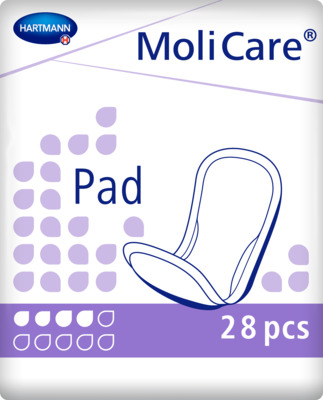Incontinence Advice
Shy Bladder Syndrome: How to Relax & Treat a Shy Bladder
Have you ever found yourself unable to use the toilet in public? You’re not alone—this common but rarely discussed issue has a name: shy bladder syndrome (paruresis). Shy bladder syndrome, or paruresis, affects millions worldwide, causing significant distress and inconvenience. But what is shy bladder syndrome, what causes it, and can it be relaxed and treated? In this article, we will provide a thorough explanation to answer everything that there is to know about shy bladder syndrome; from psychological roots to practical management tips, we delve into how to relax a shy bladder and regain control over your life. Key points: Understand the causes and symptoms of shy bladder syndrome. Explore the connection between paruresis and social anxieties like agoraphobia. Discover treatment options including graduated exposure therapy and cognitive behavioural therapy. Learn practical strategies to manage and prevent shy bladder symptoms. Gain insights into living confidently with paruresis through supportive therapies and lifestyle adjustments.

What is shy bladder syndrome?
Shy bladder syndrome is more than just about feeling uncomfortable using a public toilet —it's a profound fear of urinating in any public or communal setting where others might be present. Often referred to as pee shyness, avoidant paruresis, or a bashful bladder, this condition is believed to be a common type of social phobia that affects millions globally.
Causes of a shy bladder
The roots of shy bladder syndrome are deeply psychological.
A prime reason for a shy bladder is anxiety, which triggers a nervous response that locks up the urinary sphincter, preventing the flow of urine. This overstimulation of the nervous system can stem from past embarrassments or traumatic incidents, such as being teased while using the restroom. The fear and inability to urinate heightens the person's anxiety, especially if their bladder is uncomfortably full, turning a simple natural action into a source of severe distress.
This anxiety activates the sympathetic nervous system, causing adrenaline to surge and the bladder’s sphincter muscles to lock, preventing urination. This physiological response, compounded over time, makes even the thought of using a public toilet daunting.
Occasionally, this can have an opposite effect, and people can suffer from latchkey incontinence, whereupon they are unable to control their bladder after inserting a key within a keyhole.
Who is at risk?
Paruresis is more likely to develop in individuals with a family history of similar conditions or other anxiety disorders such as generalised anxiety disorder (GAD), obsessive-compulsive disorder (OCD), or panic disorders.
Emotional states like fear, anxiety, or intense stress aggravate the symptoms, which may also coincide with parcopresis—the fear of defecating in public places.
Learn about stress indigestion symptoms now for further details on how fear and anxiety impacts the bladder and bowels.
Symptoms of paruresis
Shy bladder syndrome symptoms can vary from person to person, but they generally worsen over time without intervention. For many, symptoms are situational (see more below on the three common triggers); they might manage to urinate in a private stall but are unable to do so at a urinal or in any public toilet.
In more acute cases, individuals may experience physical symptoms similar to a panic attack, such as sweating, a fast heartbeat, or dizziness when faced with the need to use a public toilet.
Individual behaviours can also indicate the presence of paruresis. Those affected might:
Avoid consuming liquids to reduce the need for public toilet use.
Seek isolated toilets far from crowds.
Employ mental tricks to initiate urination, like listening to running water.
Curtail travel, work, and social interactions, which can escalate to agoraphobia in severe cases.
Triggers of shy bladder syndrome
Understanding the triggers is crucial in learning how to treat shy bladder effectively. Three common triggers include:
Lack of privacy: The lack of privacy in many public toilets, especially those without fully enclosed stalls, significantly affects those with shy bladder syndrome. This issue is often more profound in male toilets, which may lack complete privacy.
Other people being present: The presence of strangers or others can heighten anxiety, making it difficult to urinate. For some, even the presence of family or friends in the vicinity can trigger anxiety.
Emotions: Feelings of being rushed, pressured, or under observation can severely impact one’s ability to relax enough to urinate. High-stress situations may worsen the condition, making public toilets a no-go area for those suffering from paruresis.
These triggers often cause people to seek isolated toilet spaces or to avoid situations where they may need to use the toilet away from home. Such behaviour can limit personal freedom and lead to social withdrawal or professional complications.
How to relax a shy bladder
Addressing shy bladder syndrome involves both understanding its triggers and implementing strategies to manage anxiety.
Techniques such as mindfulness, controlled breathing, and progressive muscle relaxation can help lessen the immediate symptoms of paruresis by calming the mind and easing the muscular tension around the bladder.
These methods are integral to paruresis treatment and are often used in conjunction with therapies like cognitive-behavioural therapy (CBT) and graduated exposure therapy to achieve long-term relief.
Diagnosis of shy bladder syndrome
Diagnosing paruresis typically involves a review of these symptoms by a healthcare professional.
If someone can urinate comfortably at home but struggles in public or at another's house, a diagnosis of shy bladder syndrome may be considered. Healthcare providers may conduct physical exams and order tests such as urinalysis, CBC, or bladder ultrasounds to rule out physiological causes of urinary retention like infections or obstructions.
It’s important for people to discuss all medications with your healthcare professional, as some can worsen symptoms of paruresis by increasing urinary retention or anxiety.
Treatments for shy bladder syndrome
This section will provide a general overview towards treatment strategies for shy bladder syndrome, some of which are more diverse than others. Having a discussion with a healthcare professional will determine which method is best for the specific individual.
Key approaches include:
Cognitive Behavioral Therapy (CBT): This therapy helps patients reframe their thoughts about urinating in public, reducing anxiety and avoidance behaviours.
Graduated Exposure Therapy: Under guidance, patients unknowingly expose themselves to increasingly challenging bathroom scenarios, which desensitises their anxiety over time.
Hypnotherapy: Techniques are used to induce a state of deep relaxation, helping patients mentally overcome their fears about public urination.
Medication: Some may benefit from anti-anxiety or antidepressant medications to manage underlying anxiety contributing to paruresis.
Meditation and Breathing Exercises: These methods teach patients how to calm their minds and relax their bodies, particularly the urinary tract, to facilitate easier urination.
Psychotherapy: Discussing and addressing broader mental health challenges can be crucial for patients whose shy bladder syndrome is part of a larger anxiety disorder.
Self-Catheterisation: In severe cases, individuals might learn to use a catheter to ensure they can empty their bladder when away from home, reducing the physical discomfort and anxiety associated with retention.
Outlook for paruresis
The outlook for those with shy bladder syndrome is generally positive, with many finding effective relief through therapeutic interventions. A large number of sufferers may experience significant improvement, particularly those who engage in cognitive behavioural therapy (CBT) and graduated exposure therapy.
Incontinence Product Finder
Selecting the right products is key in ensuring security and discretion. If you’re not quite sure what you need, try our product finder. It’ll ask you a few questions about your needs and then provide a list of recommended products that may help you.
Find Product Incontinence Product FinderLong-term risks when untreated
If left untreated, shy bladder syndrome can lead to a range of complications, both psychological and physical.
Social isolation, professional difficulties, and challenges in personal relationships are common. Physically, prolonged retention of urine can cause serious issues such as urinary tract infections, damage to the bladder muscles leading to incontinence, and in severe cases, a burst bladder.
Additionally, individuals may face challenges during situations requiring urine samples, such as drug testing, thereby needing alternative methods like providing blood, hair, or saliva samples.
When to seek medical advice
Those that are experiencing shy bladder syndrome should consult with their healthcare professional if the condition is significantly disrupting their life.
If you find that paruresis is affecting your ability to work, socialise, or participate in daily activities, it's crucial to seek professional help. Immediate medical attention is also necessary if you are unable to urinate for several hours, as this can lead to acute urinary retention, a condition that requires urgent care.
A delay in urination responses may lead to those thinking about how many times a day you should wee. Find out the recommended amount now.

Can HARTMANN Direct UK help with a shy bladder?
At HARTMANN Direct UK, we prioritise comfort and discreteness for all social situations. Shy bladders can sometimes lead to unnecessary leakages which, in turn, are linked to incontinence.
Our range of incontinence products are designed to ensure men and women of all ages feel comfortable in social situations.
If you are concerned about your shy bladder, contact us today and see how best we can help with your toiletry needs.
Sources
NHS. (2021) Overview - Generalised anxiety disorder in adults. [online] Available at: https://www.nhs.uk/mental-health/conditions/generalised-anxiety-disorder/overview/ [accessed 23/08/24]
Mind. (2018) What is OCD? [online] Available at: https://www.mind.org.uk/information-support/types-of-mental-health-problems/obsessive-compulsive-disorder-ocd/about-ocd/ [accessed 23/08/24]

MoliCare® Premium Lady Pad 2 Drops
<h2>Skin Friendly Pant Liners</h2> <p>For women that experience slight incontinence and bladder weakness, across different age groups, it can be a challenge to find the right bladder weakness product that is easy to apply and wear without the worry of potential leakages. Fortunately, we understand this approach, hence why we are happy to offer our MoliCare® Premium Lady Pad 2 drops, that is skin-friendly, Aloe Vera applied, and comes with 14 liners per bag.</p> <h2>Slim and discreet liners</h2> <p>Whether dealing with stress incontinence or urge incontinence, these panty liners offer a discreet and easy solution on the go. Simply place the pad in your underwear and secure it with the adhesive strip for all-round protection. Available in different absorbency levels, MoliCare® bladder weakness products cater to all levels of bladder weakness, ensuring secure care.</p> <h2>Control Bladder Weakness</h2> <p>Enjoy the benefits of these body-shaped absorbent panty liners, designed for women with bladder weakness. The pads offer discreet, reliable protection with features including odour control and fast absorption.</p> <p>With a wide adhesive strip, you can comfortably fix the pad in your regular underwear, providing secure and comfortable fixation. The pads are skin-friendly, featuring soft, breathable materials, including foam cuffs, and a top sheet treated with Aloe Vera.</p> <p>Keeping your skin healthy is a priority, which is why MoliCare® Premium Lady Pads have a skin-neutral pH value of 5.5 and an antibacterial finish. They are also dermatologically tested, offering peace of mind.</p> <h2>Buy pant liners online</h2> <p>Never worry about running out with our convenient order service and fast delivery direct to your door. Enjoy free shipping on orders over £50.</p> <p>If you need assistance, our professional customer service team is here to support you in choosing the right product. Reach out to us today at 0800 028 9470 and experience the comfort and reliability of MoliCare® Premium Lady Pads.</p>
MoliCare® Premium Men Pad 3 Drops (ISO 441ml)
<p><strong>Reliable and discreet incontinence pads for men with an instant-dry feeling</strong></p> <p>Bladder weakness is difficult to live with, the last thing you want to worry about is incontinence protection. That’s why our best-ever MoliCare® premium MEN Pad 3 drops offer an <strong>all-round protection</strong> that keeps everything dry and comfortably in place while fitting discreetly in your regular underwear.</p> <p>The incontinence pad for men quickly <strong>removes urine from the surface up to 86 %* faster than before</strong> and neutralises unpleasant odours to leave you feeling instantly dry and in control thanks to the new <strong>MoliCare SkinGuard</strong>®<strong> Absorbent Core Technology</strong>. This skin-friendly technology not only helps you feel up to 90 %* drier than previous MoliCare® premium<strong> </strong>MEN pads, it also helps to maintain healthy skin and preventing irritation.</p> <p><strong>Engineered for the male anatomy</strong> and dermatologically tested for maximum skin compatibility, these male urinary pads do not contain colour, perfume or latex making them environmentally friendly too.</p> <p>*Compared to last generation</p>
MoliCare® Pad 4 Drops
<h2>Handy MoliCare incontinence pads to carry on the go</h2> <p>Our MoliCare® Pad 4 Drops are an essential product for those experiencing slight incontinence, allowing you to regain control and live your busy and active life without the interference of bladder weakness. Designed for both men and women, this incontinence pad for men and women offers exceptional dryness and protection, ensuring your comfort and confidence.</p> <h2>‘Barely There’ Reassurance and Reliability</h2> <p>The MoliCare® Pad 4 Drops are slimline, discreet, and adjusted to fit your body seamlessly. It fixes securely inside your underwear, providing a ‘barely there’ comfort feel. With its soft and skin-kind fabric, along with a wide adhesive fixing strip on the backsheet, you can go about your day with the assurance of being protected against leakages.</p> <p>The absorbent core effectively prevents your skin from becoming too moist, while the elastic anti-leak edging adds an extra layer of security and peace of mind. Say goodbye to any worries about odours, as the MoliCare® Pad 4 Drops also neutralises odours to keep you fresh and confident throughout the day. Don't let incontinence hold you back from living life to the fullest.</p> <p>Ordering your MoliCare® Pad 4 Drops is hassle-free, as we offer fast delivery direct to your door. With our price match promise, you can trust that you're getting the best value for your money. Plus, enjoy free delivery on all orders over £50.</p> <p>If you need assistance in finding the perfect incontinence product for your needs, our friendly customer care team is here to help. Don't hesitate to reach out to us at 0800 028 9470. Take control of your life with the reliable protection and comfort of the MoliCare® Pad, alongside other <a href="https://www.hartmanndirect.co.uk/incontinence-products/incontinence-pads" style="color:#0563c1; text-decoration:underline">incontinence pads</a>.</p>
